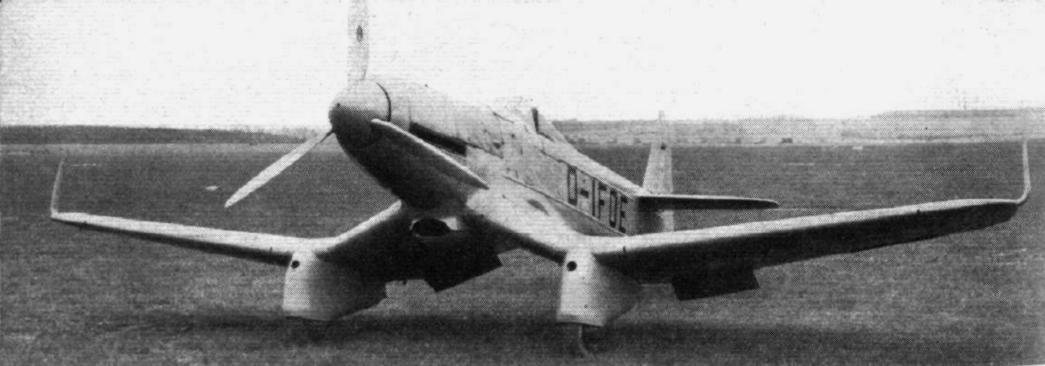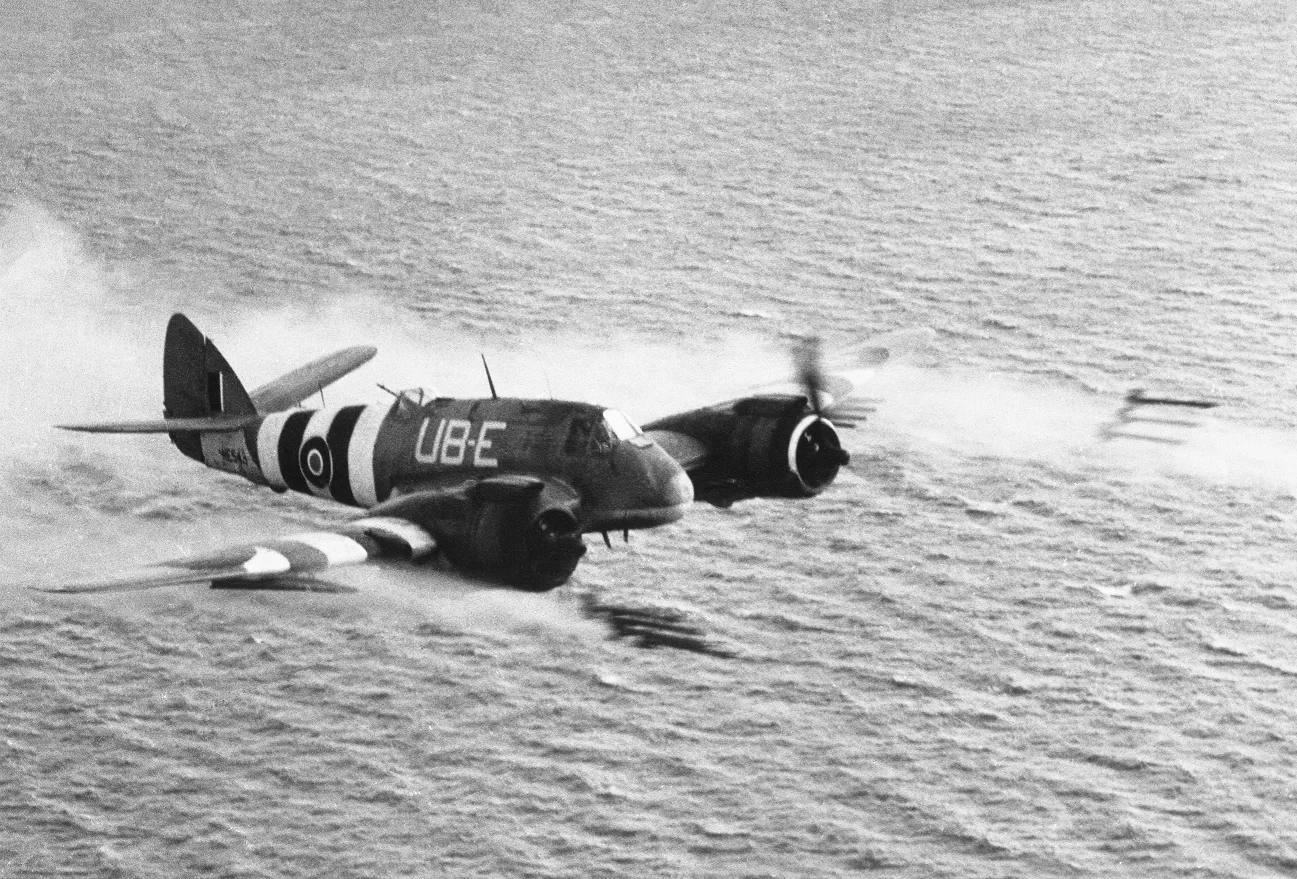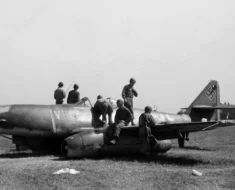In the world of aviation, some aircraft make an unforgettable impact due to their advanced design, performance, or significant role in history. One such aircraft that left a mark, albeit not as well known as others, is the Hamburger Flugzeugbau Ha 137.
This aircraft was one of the first ground attack aircraft prototypes designed and built in Germany in the early years leading up to the Second World War.
Its unique design and innovative features make it a subject of interest for aviation enthusiasts and historians alike.
Contents
Hamburger Flugzeugbau
Hamburger Flugzeugbau (HFB) was a German aircraft company that operated from 1933 to 1969.
Read More: MiG-23 – An Emblem of Soviet Air Supremacy
It was an aviation subsidiary of the large shipbuilding conglomerate, Blohm & Voss, which was responsible for creating many of Germany’s U-boats during both World Wars.
This relationship allowed HFB to leverage a unique blend of naval and aviation expertise, in combination with their lead designer Richard Vogt, leading to innovative designs such as the Ha 137.

Richard Vogt was a highly respected German aeronautical engineer who had a profound impact on aircraft design throughout the 20th century.
His innovative approach to design was evident in a wide range of aircraft that he developed over his long career, from World War II-era bombers to Cold War jet fighters.
One of his lesser-known contributions to aviation history is the Hamburger Flugzeugbau Ha 137.
Despite the restrictions of the Treaty of Versailles, Vogt was able to design and test the Ha 137 as a ground-attack and dive bomber aircraft.
Vogt’s approach to the Ha 137’s design was emblematic of his overall design philosophy: innovative, practical, and robust.
One of Vogt’s innovative design choices was the implementation of a monoplane design, which contrasted with the more common biplane design of the time.
The monoplane design offered superior speed and manoeuvrability compared to a biplane, thus making it a more efficient choice for a ground-attack aircraft.
Vogt also incorporated a radial engine into the Ha 137, a type of engine more commonly seen in American and Soviet aircraft at the time.
This choice was made due to the high power output of radial engines, as well as their durability and reliability.

Vogt’s role in the development of the Ha 137 displays his technical prowess and his ability to think outside the box.
Although the Ha 137 was ultimately passed over in favour of the Junkers Ju 87 for the Luftwaffe’s main dive-bomber, the aircraft remains a testament to Vogt’s innovative approach to aircraft design.
His influence on aviation design extends far beyond the Ha 137, but this aircraft certainly plays a significant role in the legacy of Richard Vogt’s career in aviation.
HFB was also one of the few German manufacturers that worked on both military and civilian aircraft, contributing to Germany’s aviation prowess.
It was only towards the late 1930s that HFB began focusing on military aircraft, the Ha 137 being one of their earlier forays.
Development of the Ha 137
Development of the Hamburger Flugzeugbau Ha 137 started in 1933 when the Reich Air Ministry (RLM) requested proposals for a new dive bomber.
Despite the Treaty of Versailles explicitly forbidding Germany from possessing dive-bombers, the RLM saw the potential of these aircraft for delivering accurate ground attacks.
The Ha 137 was among the designs submitted by various German companies.
It had a unique design, featuring a fixed spatted undercarriage and a radial engine – unusual for German aircraft of the time. It had a monoplane configuration with a sleek fuselage and an enclosed cockpit, housing a single pilot.
However, despite the Ha 137’s robust performance and innovative features, it ultimately lost out to the iconic Junkers Ju 87, or the ‘Stuka’, which became Germany’s main dive-bomber during the war.
Read More: CH-53K King Stallion – The U.S. Military’s Workhorse Helicopter
The Ha 137
The Ha 137 was powered by a single Bramo 322B radial engine capable of delivering 660 horsepower, giving it a top speed of around 335 kilometres per hour.
The Bramo 322B was a German nine-cylinder radial aircraft engine designed and manufactured by Bramo, the Brandenburgische Motorenwerke.
Bramo, later acquired by BMW, specialized in the production of radial engines during the 1930s.

The 322 series of Bramo engines, including the 322B used in the Hamburger Flugzeugbau Ha 137, were among their notable creations.
The 322B was an air-cooled engine with a displacement of approximately 26.8 liters.
As a radial engine, its cylinders were arranged in a circular pattern around the central crankshaft.
This arrangement provided excellent cooling and increased durability, two characteristics that were essential for military aircraft.
The Bramo 322B was capable of delivering around 660 horsepower, which made it an ideal choice for powering smaller aircraft like the Ha 137.
It was a direct-drive engine, which meant that the propeller was directly attached to the crankshaft without any reduction gearing, simplifying the engine’s design and reducing potential points of failure.
However, the engine had some shortcomings.
It was relatively heavy for its power output, and although its air-cooled design was simpler and more robust than liquid-cooled engines, it also limited the engine’s maximum power output and efficiency.
Nevertheless, it was a reliable power source for many aircraft designs of the 1930s.
One of the important features of the Ha 137’s design was the wings.
With a span of 11 meters and a length of around 9.6 meters, making it a relatively compact aircraft. Its maximum takeoff weight was approximately 2,180 kilograms.
They utilised a cantilever design, which means they were supported by internal structures and did not require external bracing or struts.
This resulted in a cleaner, more aerodynamic shape, which further improved speed and performance.
Read More: The Nine-O-Nine – The 140 Combat Missions B-17 Legend
In terms of materials and construction, like many aircraft of its time, the Ha 137 used a metal framework covered in doped fabric.
This made the aircraft relatively light while still maintaining structural strength.

The wings also housed hardpoints for attaching bombs, allowing the Ha 137 to fulfil its intended role as a ground attack and dive bomber aircraft.
Furthermore, the design of the wings allowed for stable and controlled dives, a critical factor in accurate bomb delivery.
The Ha 137’s wing design was one of the key features that differentiated it from many contemporary aircraft and represented the shift towards monoplane designs.
Under the fuselage, up to 500 kilograms of bombs could be carried, which for the time was fairly impressive.
It was also equipped with two 7.92 mm machine guns for self-defence, mounted on the sides of the fuselage.
The MG 17 machine gun was a 7.92mm rifle calibre machine gun that was extensively used by the German Luftwaffe during the Second World War.
Designed by Rheinmetall, the MG 17 was an air-cooled, belt-fed machine gun that was a key part of Germany’s aerial armament in the early stages of the war.

The MG 17 was a reliable, high-speed machine gun capable of firing at a rate of around 1,200 rounds per minute.
It was typically mounted in the wings or fuselage of an aircraft, allowing the pilot to fire it directly towards the intended target.
The MG 17’s 7.92mm calibre was common for machine guns of the era and offered a balance of power and rate of fire.
While not as destructive as a cannon, the MG 17’s high rate of fire and the possibility of mounting multiple guns on one aircraft made it an effective weapon for strafing and dogfighting.
In the case of the Hamburger Flugzeugbau Ha 137, the aircraft was equipped with two MG 17 machine guns. These machine guns were mounted on the sides of the fuselage, which allowed the pilot to engage targets directly in front of the aircraft.
However, as World War II progressed, the limitations of machine guns like the MG 17 became apparent, especially when faced with heavily armoured targets or fast, manoeuvrable fighters.
This led to a shift towards larger calibre cannon armaments and the eventual phasing out of the MG 17 from frontline service.
Comparison to the Ju-87
While the Ha 137 was a competent dive-bomber in its own right, it was ultimately the Ju 87 ‘Stuka’ that won the RLM’s approval.

The Ju 87 was seen as the superior aircraft primarily due to its superior dive-bombing capabilities, which included an automatic pull-out mechanism that prevented pilots from blacking out after a steep dive.
The Ju 87 was also equipped with a more powerful engine and could carry a larger bomb load, making it more effective in the dive-bombing role.
However, unlike the Ha 137, it had a somewhat complicated retractable landing gear system that made it more vulnerable during landings and take-offs.
It’s worth noting that the Ha 137 did have certain advantages over the Ju 87, such as a simpler and more rugged design that potentially offered better durability.
Also, the enclosed cockpit of the Ha 137 was a more advanced design feature compared to the open cockpit of the early Ju 87 variants.
Conclusion
The Hamburger Flugzeugbau Ha 137, while not as widely recognized as other aircraft of its era, was a significant stepping stone in the development of ground attack aircraft.
Its design was innovative for its time, and it marked a key point in the transition of German aircraft from biplanes to more advanced monoplane designs.
Read More: Operation Black Buck – One of the Longest Bombing Runs in History
Though it did not become the Luftwaffe’s primary dive bomber, the Ha 137 remains a testament to the pioneering spirit of Hamburger Flugzeugbau and the innovative landscape of German aviation in the 1930s.
The technological advancements and design philosophies that emerged from this period, including those of the Ha 137, would go on to shape the future of global aviation.
If you like this article, then please follow us on Facebook and Instagram.
Specifications
- Crew: one
- Length: 9.45 m (31 ft 0 in)
- Wingspan: 11.15 m (36 ft 7 in)
- Height: 2.8 m (9 ft 2 in)
- Empty weight: 1,814 kg (3,999 lb)
- Gross weight: 2,415 kg (5,324 lb)
- Powerplant: 1 × Junkers Jumo 210Aa V-12 liquid-cooled piston engine, 440 kW (590 hp) for take-off 455 kW (610 hp) at 2,600 m (8,530 ft)
- Maximum speed: 297 km/h (185 mph, 160 kn) at 2,000 m (6,562 ft)
- Cruise speed: 290 km/h (180 mph, 160 kn) at 2,000 m (6,562 ft)
- Range: 575 km (357 mi, 310 nmi)
- Service ceiling: 7,000 m (23,000 ft)
- Rate of climb: 8.33 m/s (1,640 ft/min)







